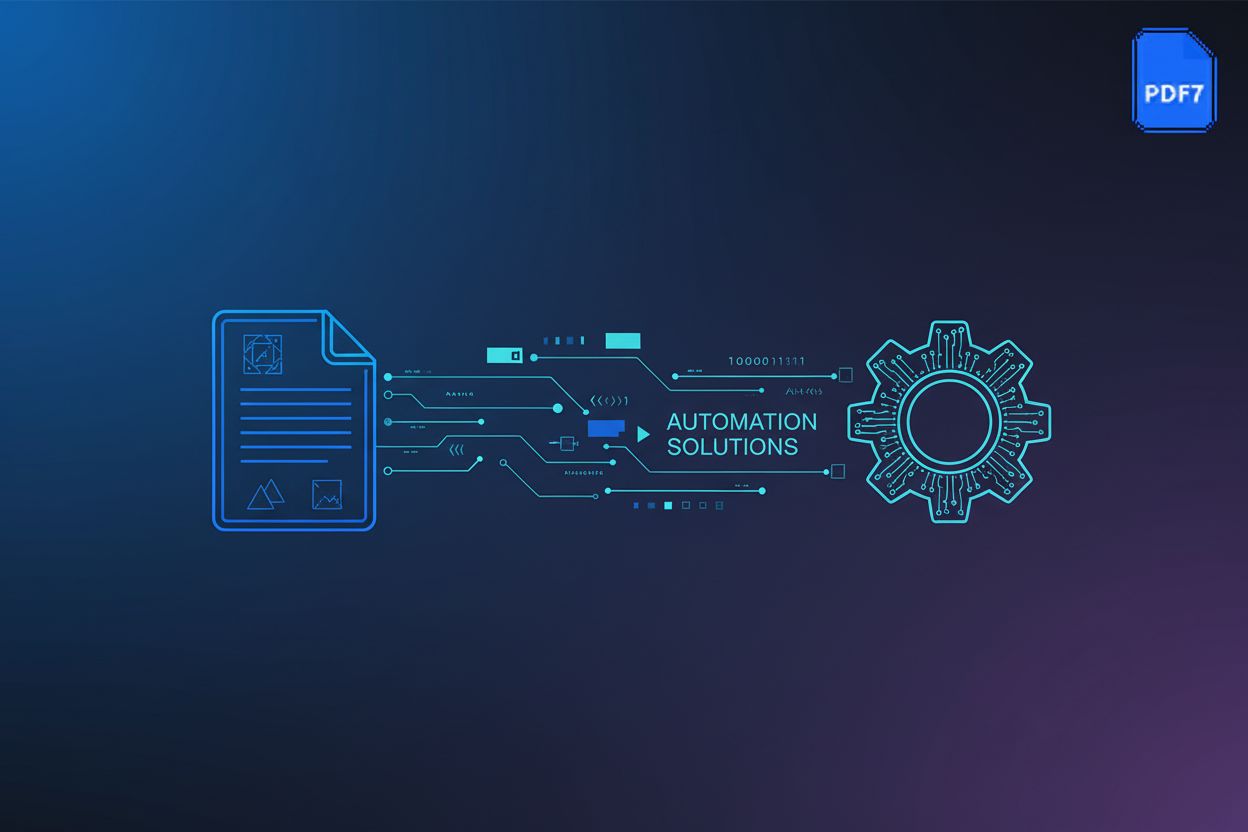Securing Your File Format Conversion API: A Comprehensive Guide
TL;DR
Understanding the Landscape of File Format Conversion APIs
Did you know that the global file conversion software market is projected to reach $2.48 billion by 2029? As file format conversion apis become increasingly vital for businesses, understanding their landscape is crucial for robust security. Let's dive in.
File format conversion apis are tools that allow developers to integrate file conversion capabilities into their applications. They enable the transformation of files from one format to another, such as converting a DOCX file to a PDF, or an image from JPG to PNG. These apis streamline document management, content processing, and data exchange.
- Document Management: Companies use these apis to standardize file formats for archiving and compliance.
- Content Processing: Media companies convert videos and images to various formats for different platforms.
- Data Exchange: Financial institutions exchange data in specific formats, often requiring conversion for compatibility.
For example, ConvertAPI supports over 200 formats, tailored for developers and businesses.
Several file formats are commonly used, each with its own set of security considerations. Understanding these formats helps in identifying potential risks.
- PDF: While versatile, PDFs can contain embedded scripts that pose a security risk.
- DOCX/XLSX: Microsoft Office formats may include macros, which can be exploited to run malicious code.
- JPG/PNG: Image files can contain steganographic data or metadata with hidden threats.
The attack surface of a file conversion api includes all the points where an attacker could potentially compromise the system. This includes file uploads, api endpoints, and the processing engines themselves. A holistic security approach considers each of these entry points.
However, the security landscape of these apis is often overlooked. Attackers can exploit vulnerabilities in several ways:
- Processing Untrusted User-Uploaded Files: This is the most common attack vector. Malicious files disguised as legitimate documents can be uploaded, leading to code injection or malware execution. For instance, a PDF might contain a malicious JavaScript payload that executes when the PDF is processed.
- Code Injection via Malformed Files: Attackers can craft files with malformed structures or unexpected data. When the conversion engine attempts to parse these files, it can lead to buffer overflows, memory corruption, or even arbitrary code execution.
- Exploiting Underlying Conversion Engines: The software libraries or tools used for conversion can have their own vulnerabilities. If these are not kept up-to-date, they can become entry points for attackers.
- Denial-of-Service (DoS) Attacks: Large or specially crafted files can consume excessive resources (CPU, memory, disk space) during conversion, leading to service unavailability.
Understanding these specific threats is critical for building a robust security strategy. In the next section, we'll explore common security threats.
Essential Security Measures for File Conversion APIs
Securing your file format conversion api is not just about preventing breaches; it's about ensuring trust and reliability for your users. Let's explore essential security measures that can make your api a fortress.
First line of defense? Rigorous input validation. Validate all incoming data to ensure it conforms to expected formats, sizes, and types.
- Check file types using magic numbers or MIME types.
- Limit file sizes to prevent denial-of-service attacks.
- Scan file content for malicious code or exploits.
For example, a healthcare provider using a file conversion api to process patient records must ensure that only authorized document types are accepted. The simple .endswith() check in the Python example is a starting point, but for a real-world healthcare scenario, more sophisticated validation is needed. This might involve:
- MIME Type Checking: Instead of just relying on file extensions, which can be easily spoofed, check the actual MIME type of the file. Libraries like
python-magiccan help with this. - Content Inspection: For sensitive data like patient records, you might need to go deeper and inspect the file's content for specific patterns or keywords that indicate it's not a valid document type.
- Using Specialized Libraries: For certain formats, like PDFs, dedicated libraries can parse the file structure and identify potential malformations or embedded threats.
- Threat Intelligence Feeds: Integrating with threat intelligence feeds can help identify known malicious file signatures or patterns.
# Python example: validating file type (basic)
def validate_file_type(filename):
if filename.endswith(('.pdf', '.docx', '.txt')):
return True
else:
return False
Strong authentication is crucial. Use robust mechanisms like api keys or OAuth 2.0 to verify the identity of each user or application accessing your api.
- Implement role-based access control (RBAC) to restrict access to sensitive functions based on user roles.
- Ensure that api endpoints are protected with appropriate authorization policies.
- Regularly rotate api keys and tokens to minimize the risk of compromise.
For instance, a financial institution might use RBAC to ensure that only authorized personnel can access functions that convert financial reports.
How you handle and store files is paramount. Encrypt all files at rest and in transit using strong encryption algorithms like AES-256.
- Implement secure temporary storage for processing files.
- Securely delete files after processing.
- Consider configurable retention policies, as ConvertAPI offers, to manage data lifecycle effectively.
As highlighted by ConvertAPI, files should be automatically deleted after processing, with configurable retention policies.
By implementing these measures, you significantly reduce the risk of data breaches and ensure the integrity of your file conversion api. Now that we have essential measures in place, it's crucial to continuously identify and address potential weaknesses.
Proactive Vulnerability Management
Is your file format conversion api a digital Fort Knox, or is it leaving the back door open for attackers? Proactive vulnerability management is not just an option; it's a necessity for maintaining a secure and reliable service.
Static code analysis tools examine the api's source code without executing it. They identify potential vulnerabilities such as buffer overflows, SQL injection flaws, and other common coding errors. This process helps catch issues early in the development lifecycle when they are less costly to fix.
Dynamic analysis, on the other hand, involves testing the api while it's running. Also known as Dynamic Application Security Testing (DAST), this method assesses the api's runtime behavior, uncovering vulnerabilities that may not be apparent through static analysis alone. DAST tools simulate real-world attacks to identify weaknesses in authentication, authorization, and data handling.
Integrating both static and dynamic analysis into the CI/CD pipeline ensures continuous security assessment. This approach automates the process of identifying and addressing vulnerabilities, reducing the risk of deploying insecure code.
Penetration testing simulates real-world attacks to identify exploitable vulnerabilities. Ethical hackers probe the api for weaknesses, attempting to bypass security controls and gain unauthorized access. The insights gained help organizations understand their risk exposure and prioritize remediation efforts.
Engaging third-party security experts for comprehensive security audits provides an unbiased assessment of the api's security posture. These experts bring specialized knowledge and experience, identifying vulnerabilities that internal teams may have overlooked.
Addressing identified vulnerabilities promptly and effectively is crucial. Implement a clear process for tracking and resolving security issues, ensuring that patches are applied in a timely manner.
Maintaining an inventory of all api dependencies, including libraries and frameworks, is essential for effective dependency management. This inventory allows organizations to track the versions of each component and identify potential vulnerabilities.
Regularly updating dependencies to patch known vulnerabilities is critical. Many vulnerabilities are discovered in open-source libraries, and timely updates are necessary to mitigate the risk of exploitation.
Using dependency scanning tools helps identify vulnerable components automatically. These tools scan the api's dependencies, comparing them against databases of known vulnerabilities, and alerting developers to potential risks.
By proactively managing vulnerabilities, you can significantly reduce the risk of security breaches and ensure the ongoing security of your file conversion api. In the next section, we'll explore advanced security techniques that can further bolster your defenses.
Advanced Security Techniques
Is your file format conversion api truly secure, or could advanced techniques bolster its defenses? Let's explore how sandboxing, content disarm, and watermarking can elevate your api's security posture.
Sandboxing isolates the file conversion process in a restricted environment. This prevents malicious code from affecting the rest of the system. By limiting the resources available to the conversion engine, you also prevent resource exhaustion attacks.
Strict process isolation is vital. It ensures that even if a breach occurs within the sandbox, lateral movement to other parts of the system is blocked. This containment strategy limits the scope of potential damage.
- Implementation Examples: Technologies like Docker containers, virtual machines (e.g., using KVM or VMware), or specialized sandboxing libraries can be employed. For web-based apis, serverless functions with strict execution limits can also act as a form of sandboxing.
Content Disarm and Reconstruction (CDR) techniques are crucial for removing potentially malicious content from files. Instead of just scanning for threats, CDR reconstructs the file in a safe format. This eliminates embedded threats by creating a clean, secure version.
The goal is to ensure the reconstructed file retains its original functionality. CDR is particularly useful for handling documents from untrusted sources, providing an extra layer of security.
- Implementation Examples: Libraries like Apache Tika can help in extracting content and metadata. For specific formats like PDFs, tools that can parse and rebuild the document structure without executing embedded scripts or macros are key. Some commercial CDR solutions offer specialized engines for this purpose.
Watermarking adds identifiable markers to converted files. These markers can track the file's origin and prevent unauthorized distribution. Digital signatures verify the integrity and authenticity of converted files, confirming they haven't been tampered with.
Ensuring that watermarks and signatures are tamper-proof is essential. This provides a reliable way to trace and validate the files, enhancing overall security.
- Implementation Examples: Watermarking can be implemented by embedding invisible data within images or by adding metadata to documents. Digital signatures typically involve cryptographic hashing and signing using private keys. Libraries for cryptographic operations are readily available in most programming languages.
By implementing these advanced techniques, you can significantly strengthen the security of your file format conversion api. Next, we'll discuss compliance and regulatory considerations.
Compliance and Regulatory Considerations
Is your file format conversion api sailing smoothly, or are hidden regulatory icebergs lurking beneath the surface? Navigating compliance is crucial to avoid costly penalties and maintain user trust.
A holistic security approach for file conversion apis means integrating security into every stage of the development and operational lifecycle. It's not just about implementing individual security measures but ensuring they work together to create a comprehensive defense. This includes understanding the threat landscape, implementing robust defenses, continuously monitoring for vulnerabilities, and adhering to regulatory requirements.
General Data Protection Regulation (GDPR): For any api handling data of EU citizens, GDPR compliance is paramount. This includes ensuring data processing is lawful, fair, and transparent.
- Concrete Examples:
- Data Minimization: When converting a document containing personal data, only extract and process the necessary fields for the conversion. If a user uploads a CV for conversion to PDF, don't store their entire contact list unless explicitly required and consented to.
- User Control: Provide clear mechanisms for users to consent to data processing, access their uploaded files, request deletion, and understand how their data is used during conversion. This might involve a user dashboard or clear API endpoints for data management.
- Lawful Basis: Ensure you have a legitimate reason (e.g., user consent, contractual necessity) for processing any personal data involved in the conversion.
- Concrete Examples:
For healthcare applications, compliance with the Health Insurance Portability and Accountability Act (HIPAA) is essential. HIPAA mandates protecting Protected Health Information (PHI).
- Concrete Examples:
- Encryption: All PHI must be encrypted both in transit (using TLS/SSL) and at rest (using strong encryption algorithms like AES-256 for stored files).
- Access Controls: Implement strict RBAC to ensure only authorized personnel can access or process files containing PHI. Audit logs should meticulously track all access to PHI.
- Business Associate Agreements (BAAs): If your api is used by a healthcare provider to process PHI, you must have a BAA in place, outlining your responsibilities for protecting that data.
- Concrete Examples:
Several other regulations may apply depending on the industry. SOC 2 ensures service providers securely manage data to protect the interests of the organization and the privacy of its clients. ISO 27001 provides a framework for information security management systems. If processing credit card data, comply with the Payment Card Industry Data Security Standard (PCI DSS).
- Concrete Examples for PCI DSS:
- Cardholder Data Handling: If your api is involved in processing files that might contain credit card numbers, you must ensure that cardholder data is not stored, processed, or transmitted unnecessarily. If it is, strict controls like tokenization, encryption, and network segmentation are required. Often, the best approach is to design the api to avoid handling sensitive payment information altogether.
- Vulnerability Management: Regularly scan for vulnerabilities and perform penetration testing as mandated by PCI DSS.
- Concrete Examples for PCI DSS:
Staying compliant with data protection and industry-specific regulations builds trust and protects your organization. Next, we'll explore how to monitor and log api activity for enhanced security.
Monitoring, Logging, and Incident Response
Is your file format conversion api a black box, or do you have clear visibility into its operations? Effective monitoring, logging, and incident response are essential for maintaining a secure and reliable api. Let's explore how to implement these critical practices.
Implement real-time monitoring to detect suspicious activity and potential attacks. This involves continuously tracking key metrics and events to identify anomalies that may indicate a security breach.
- Set up dashboards to visualize api traffic, error rates, and resource usage.
- Monitor file sizes, conversion times, and the frequency of requests from specific IP addresses.
- For example, a sudden spike in conversion requests from a single IP address could signal a denial-of-service attack.
Configure alerts for critical security events, such as failed authentication attempts, unusual file access patterns, or the detection of malware. Integrate monitoring with security information and event management (SIEM) systems for centralized analysis and response. This allows security teams to correlate events from various sources and identify complex threats.
Logging all api requests, file access events, and security-related activities provides a detailed record of system behavior. This information is crucial for security analysis, incident investigation, and compliance reporting.
- Include details such as timestamps, user IDs, file names, and the outcome of each conversion request.
- Store logs securely and retain them for a sufficient period, complying with relevant regulations like GDPR or HIPAA.
- Use logs to identify trends, detect anomalies, and reconstruct security incidents.
Develop a detailed incident response plan to address security breaches and incidents. This plan should outline the steps to be taken in the event of a security incident, including containment, eradication, and recovery.
- Define roles and responsibilities for incident response team members.
- Establish communication channels for coordinating the response effort.
- Regularly test and update the incident response plan to ensure its effectiveness.
Regularly test and update the incident response plan to ensure its effectiveness. This includes conducting simulations to identify weaknesses in the plan and improve the team's response capabilities.
By implementing robust monitoring, logging, and incident response practices, you can significantly enhance the security posture of your file format conversion api. This comprehensive approach, from understanding the landscape to responding to incidents, is key to a truly secure service.





